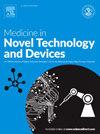— Stethoscopes are commonly used to diagnose cardiac and respiratory diseases. The advent of digital stethoscopes added the capability to remotely monitor the cardiorespiratory well-being of patients and facilitate digital remote auscultations for physicians to examine their patients outside of the clinic. To increase the adoption of a hybrid diagnosis between in-person and remote auscultations, it is important to characterize the frequency response of different configurations of digital stethoscopes. A standard testing platform was adopted from the literature and re-validated by seven physicians. Two wearable and two non-wearable digital stethoscopes were investigated. A similarity factor score was used to analyze select time-synchronized acoustic events that achieved high fidelity between stethoscopes. The frequency responses between devices were compared using the correlation coefficient. Two devices reported the highest correlation coefficient of 0.72 and 0.75 in the wearable and non-wearable categories, respectively. The correlation coefficient of the frequency responses between the same pair of devices on the human chest was 0.91. With such a high agreement in the frequency response between the wearable and non-wearable digital stethoscope, it can be concluded that the configuration of digital stethoscope is not a limiting factor of performance, and both are acceptable and desirable for physicians to adopt either configuration in remote delivery of healthcare.


